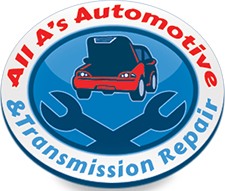When Do Auto Fuses Cause Common Electrical Problems?

 Today, cars come equipped with so many high-tech bells and whistles that it can be a little daunting when something suddenly stops working. Sometimes, a tiny colored plastic tab can cause an electronic accessory to die or even your car not to start at all. Auto fuses have evolved a lot since their first use in automobiles. With all the fancy electronic gizmos in our cars attached to auto fuses, a blown fuse or two in your car’s fuse box can create a myriad of electrical problems.
Today, cars come equipped with so many high-tech bells and whistles that it can be a little daunting when something suddenly stops working. Sometimes, a tiny colored plastic tab can cause an electronic accessory to die or even your car not to start at all. Auto fuses have evolved a lot since their first use in automobiles. With all the fancy electronic gizmos in our cars attached to auto fuses, a blown fuse or two in your car’s fuse box can create a myriad of electrical problems.
What Do Auto Fuses Do?
Auto fuses are electrical components that interrupt a circuit before it becomes overloaded. These circuits transmit power to accessories (lights, windshield wipers, horns) and vital systems (starter and ignition systems). An auto fuse blows because an electrical surge causes the amperage to exceed the maximum limit for that circuit.
Types Of Auto Fuses
Auto fuses are current-sensitive devices that protect vehicles’ wiring and electrical equipment. Several types of auto fuses perform specific applications to meet voltage and current requirements. The kind of fuse type used depends on the vehicle’s make and model and the type of electrical system installed.
Fast-Blow Auto Fuses
Fast-blow fuses blow immediately during a short circuit.
Glass Tube Fuses
The glass tube fuse was the main type of fuse used in earlier generations of vehicles before the invention of blade-type fuses. Glass fuses incorporate two metal end caps terminals with a metal wire connecting them to provide a path for electrical current. Glass tube fuses fail when there is excessive electrical current. The glass tubes are about ¼ inches wide and have different length dimensions depending on the amperage rating.
Bosch or Torpedo Fuses
Bosch fuses look similar to glass tube fuses in shape but are made of plastic and have two point-shaped end caps, which cause them also to be called torpedo fuses. Bosch fuses contain a thin metal strip that connects the two metal end caps. This conductive metal strip fails or breaks when excessive electrical current flows through the fuse. In more modern vehicles, blade fuses replaced Bosch fuses.
Blade Fuses
Auto manufacturers first developed and used blade-type fuses (or plug-in fuses) during the 1970s. They are the most common auto fuse type used in the car industry. A blade fuse consists of two blades (or prongs) plus a fuse element (a metal wire connecting the blades) encased in colored, semi-transparent plastic. The plastic housing lets you or the repair technician easily see the broken element in a blown fuse.
4 Main Types Of Blade Fuses:
- Regular (ATO & ATC)
- Mini (APM/ATM)
- Micro
- Maxi (APX)
EV Fuses
An electric vehicle fuse is a high-voltage, high-current-rating fuse used in high-voltage batteries, electric vehicles, and hybrid-electric vehicles. An EV fuse contains layers of strips that carry the current. It is sealed with silica sands or other non-conductive powder so that when the fuse blows, the live current dissipates. They are available in voltage ratings up to 1000V DC with a current rating of up to 1000 amp.
Slow-Blow Fuses
A slow-blow fuse can withstand a large amount of electric current for a short time without blowing. Slow blow fuses work with auto components that require a lot of current all at once without breaking- like a starter and alternator.
Bolt Down Fuses
A bolt-down fuse works best with high power requirements, a time delay, and limited available space. Its small tin-plated contact saves space while protecting the fuse from moisture corrosion. When high amounts of current flow through these fuses, their temperature rises slowly and resists blowing immediately. They have a rating of up to 500 amps.
Cartridge Fuses
Cartridge fuses are rectangular and used in high-current applications where they withstand high temperatures for a long time, often in Japanese cars. They have built-in extended time delay and voltage-drop features. The fuse’s top window is transparent to identify a broken fuse quickly. They are available in both male and female terminals. The male terminal has either a bent or straight leg that bolts down.
Fusible Links
Fusible links look much different than a standard fuse. They are low-voltage, short pieces of insulated cable that melt when the electrical current is too high. The fusible link is the weakest connection in the electrical route. Typically, it is about four wire sizes smaller than the circuit wire.
Blown Fuses: Common Electrical Problems
One of the first signs of a blown fuse is a loss of power or an electrical problem to one or more of the vehicle’s systems or accessories. Auto fuses connect and protect specific electronic circuits from potential overload. When a circuit becomes overloaded, the fuse blows and cuts power to the circuit in question to protect it from damage. Common electrical problems arising from blown fuses can include:
- Inoperable radio
- Power windows won’t open or close
- The door lock button stops working
- Windshield wipers don’t work
- The HVAC fan stops working
- The rear defroster doesn’t work
- Side view mirrors won’t adjust or defrost
- The sun/moon roof won’t open or close
- AUX plugs stop working
- Seat warmers don’t work
How To Locate My Car’s Fuse Box
Read your owner’s manual to locate your car’s fuse box. You can usually find it underneath the steering wheel or under the hood in the engine compartment. However, different manufacturers and car models may install it in other places. If you don’t have an owner’s manual for your car, your auto dealer may have one online, along with a list of fuses and a fuse box diagram.
Identify Blown Auto Fuses
Blown fuses in your car’s electrical system can be challenging to find. Here are a few ways to identify a blown fuse.
- Examine the metal filament inside the glass or transparent plastic casing. If the filament or plastic is melted or discolored, it’s likely a blown fuse.
- Measure the electrical resistance across the prongs of the fuse and test the current flow with a multimeter or circuit tester tool.
- Replace the questionable fuse with a new one with the same rating and see if the circuit powers up.
If you feel uncomfortable mucking around in your car’s electrical system or need help identifying the issue, bring your vehicle to your local auto service center for a diagnostic service.
Auto Electrical System Repairs in Midland, MI
Issues with your car’s electrical system can create electrical problems, such as blown fuses and inoperable accessories. However, if not repaired correctly, they can also cause more serious issues. Let our qualified auto technicians at All A’s Automotive & Transmission Repair diagnose the issues with your fuse box and replace faulty auto fuses.
Schedule Auto Electrical System Service
Call us at (989)631-4672 or visit our website to schedule your automotive electrical system service today!
Posted in: Electrical System
Leave a Comment (0) ↓
